#prairie voles
Explore tagged Tumblr posts
Text
hi baby bells, or cheese factory tourists… ive come to feed you animal knowledge in the form of tooth-rotting ghost x reader fluff, today are PRARIE VOLESSSSS

Tipsy activities with Simon would include making out, celebrity gossip where you would blab about and he would listen or drunkenly make food which tasted either really bad or really good, no in between. But today you unlocked a new tipsy activity, watching animal documentaries together.
You were curled up next to Simon, wearing one of his old shirts and a random pair of underwear, a blanket wrapped tightly around you with a bowl of chips in your lap. Simon nursed a whiskey, oddly enough but it was 10 PM, reasonable time. Whatever. You were stressed out the entire fucking day, hence why you had a few drinks.
His mask was left forgotten on the coffee table as the both of you stared at the television, the star of the episode today were prairie voles, you’d learned now thanks to National Geographic that prairie voles are extremely affectionate animals. They sense when their partner is stressed then shower them in affection, just like you and Simon.
The scene switched to two voles grooming each other and you giggled and elbowed Simon in his side gently to get his attention, when you felt his eyes on you, you grinned. “That’s literally us.” You spoke, jutting your chin to the screen as he looked at the screen and chuckled. “Aye, that’s us.” He spoke. “Let’s recreate that scene, hm?” He added.
He snatched the bowl of popcorn off your lap and put it on the coffee table next to his mask as he pulled you onto his lap and wrapped his arms around your waist, his touch gentle. He leaned in and started peppering kisses all over your face, neck, and shoulders as you giggled. “Simon!” You playfully scolded, trying to squirm away but his hold on you tightened.
“Hm?” He hummed, smiling away as you grinned like an idiot, continuing his affection shower. Alcohol made him a lot more affectionate than usual, sober Simon was affectionate of course but tipsy Simon was so much more lovey with you. He was like a big lovebird, you debated at least weekly to get him drunk so that he’d shower you with love.
“You’re so stupid.” You slurred as he snorted and kept kissing you, and not an inch of skin was left unloved, and it never would be as long as you had him. Somehow a big muscle wall of a soldier could transform into your own big stupid prairie vole, only for you.
guys i love animals :)3)3)36364)):632)&4!:$2
#call of duty#cheeseatlantic#cod fluff#simon ghost riley#cod modern warfare#cod headcanons#cod comfort#cod mw3#ghost cod#cod#cod mw2#cod mwii#cod x reader#ghost call of duty#simon riley x you#simon ghost x reader#simon riley x reader#simon riley#simon ghost fluff#fluff#simon ghost x you#voles#prairie voles
720 notes
·
View notes
Text

Prairie vole orgasms 'rewire' their brains for long-term love
Researchers discover ejaculation in male prairie voles triggers a cascade of neural activity in both sexes that helps them form strong bonds and monogamous relationships.
(Image credit: Minden Pictures / Alamy Stock Photo)
15 notes
·
View notes
Text
i said this on bsky so i’ll say it here too. i don’t think viktor arcane in a professor au would be a strict one. in fact i think he would be like my professor who will always, without fail, go on a mid-class tangent for at least 15 minutes about prairie voles because they’re his area of research. he’s my favorite professor ever. and that would be viktor with whatever animal rio is
#im gonna reblog this with prairie voles. they’re so fucking cute#viktor arcane#arcane#coveredinsunposting
3 notes
·
View notes
Text




instagram comments are a cesspool especially on a post like this but my god
#evan says shit#man found a study on mating behavior in PRAIRIE VOLES. the education crisis is dire.
13 notes
·
View notes
Text
The vole lab has a breeder pair that has randomly been having pups with lighter colored fur lately, and these guys are so freaking cute!!!! For reference this is a prairie vole, already pretty darn cute…

now imagine it with fur like this

I really wish I could show a picture of the ones we have but I’m not allowed. But trust me they are adorable. And one of the lab members is going to try and breed for this gene specifically so we’ll have a bunch of light colored voles and I am so freaking excited!!!!
1 note
·
View note
Text
Round 3 - Mammalia - Rodentia




(Sources - 1, 2, 3, 4)
Our next and last order of the Glires clade is the Rodentia. Rodentia is the largest order of mammals, with about 40% of mammal species being rodents. Rodentia is comprised of the families… *deep breath*… Anomaluridae (“scaly-tailed squirrels”), Zenkerellidae (“Cameroon Scaly-tail”), Pedetidae (“springhares”), Castoridae (“beavers”), Geomyidae (“pocket gophers”), Heteromyidae (“kangaroo rats/mice” and “pocket mice”), Ctenodactylidae (“gundis”), Diatomyidae (“Laotian Rock Rat”), Bathyergidae (“African mole-rats”), Heterocephalidae (“Naked Mole-rat”), Hystricidae (“old world porcupines”), Petromuridae (“Dassie Rat”), Thryonomyidae (“cane rats”), Chinchillidae (“chinchillas” and “viscachas”), Dinomyidae (“Pacarana”), Caviidae (“cavies”), Dasyproctidae (“agoutis” and “acouchis”), Cuniculidae (“pacas”), Abrocomidae (“chinchilla rats”), Ctenomyidae (“tuco-tucos”), Echimyidae (“Nutria”, “spiny rats”, and “hutias”), Octodontidae (“degus” and kin), Erethizontidae (“new world porcupines”), Dipodidae (“jerboas”), Sminthidae (“birch mice”), Zapodidae (“jumping mice”), Calomyscidae (“mouse-like hamsters”), Cricetidae (“hamsters”, “voles”, “lemmings”, “muskrats”, and “new world rats/mice”), Muridae (“true rats/mice” and “gerbils”), Nesomyidae (“Malagasy rats/mice”, “climbing mice”, “African rock mice”, “swamp mice”, “pouched rats”, and “White-tailed Rat), Platacanthomyidae (“spiny dormice” and “Chinese pygmy dormice”), Spalacidae (“mole-rats”, “bamboo rats”, and “zokors”), Aplodontiidae (“Mountain Beaver”), Gliridae (“dormice”), and Sciuridae (“squirrels”).
The distinguishing feature of rodents is their pairs of continuously growing, razor-sharp, open-rooted incisor teeth. These incisors have thick layers of enamel on the front and little enamel on the back. Because they do not stop growing, the animal must continue to wear them down so that they do not reach and pierce the skull. Some rodents have elastic cheeks or even cheek pouches for storing food. They usually have flexible fore limbs with five digits, including an opposable thumb, while the hind limbs can have three to five digits. The majority of species are plantigrade, walking on both the palms and soles of their feet, and have claw-like nails. Many rodents have well-developed senses of smell, hearing, and vision. Nocturnal species often have enlarged eyes and some are sensitive to ultraviolet light. Many species have long, sensitive whiskers for touch. Some have prehensile tails, some have vestigial tails or no tails at all. Rodents are highly diverse, having evolved to fill a large variety of niches and filling almost every land-based habitat on Earth. There are terrestrial, fossorial, arboreal, semi-aquatic, herbivorous, omnivorous, insectivorous, and carnivorous rodents. Rodent species use a wide variety of methods of locomotion including quadrupedal walking, running, burrowing, climbing, bipedal hopping, swimming, and even gliding. Many rodents have advanced cognitive abilities, and display advanced feats of memory and intelligence.
Sexual dimorphism occurs in many rodent species. In some rodents, males are larger than females, while in others the reverse is true. Rodents exhibit a wide range of types of social behavior ranging from the caste system of the Naked Mole-rat (Heterocephalus glaber), the extensive "towns" of the colonial prairie dogs (genus Cynomys), through family groups to the independent, solitary life of the edible dormice (genus Glis). Beavers (genus Castor) live in extended family units typically with a pair of adults, and both their recent kits and older young. Brown Rats (Rattus norvegicus) usually live in small colonies with up to six females sharing a burrow and one male defending the territory around the burrow. The Prairie Vole (Microtus ochrogaster) is monogamous and forms a lifelong pair bond. Female rodents tend to play an active role in choosing their mates. Factors that contribute to female preference may include the size, dominance and spatial ability of the male. Rodents may be born either altricial (blind, hairless and relatively underdeveloped) or precocial (mostly furred, eyes open and fairly developed) depending on the species. In many social species, young may be cared for by individuals other than their parents, a practice known as alloparenting or cooperative breeding.
According to the fossil record, Rodentia arose in the Paleocene, probably in Asia, shortly after the extinction of the non-avian dinosaurs some 66 million years ago. Some molecular clock data suggest Rodentia had already appeared by the Late Cretaceous, although other molecular divergence estimations are in agreement with the fossil record.

Propaganda under the cut:
Many rodents are “ecosystem engineers”: species which have a huge impact on their habitat. Ecosystem engineers are important for maintaining the health and stability of the environment they are living in. Beavers (genus Castor) (see gif above) are often used as the prototypical ecosystem engineer example, because of the impact their dams have on channel flow, geomorphology, and ecology. Beavers can create entire wetlands, habitat which is then used by millions of other species. Ground squirrels such as Groundhogs (Marmota monax) and prairie dogs (genus Cynomys) perform substantial modifications by burrowing and turning soil. They are able to influence soils and vegetation of the landscape while also providing burrows that are used by other species. Many tree squirrels bury nuts over a widespread area (scatterhoarding), and often forget them, resulting in entire new generations of forest diversity being planted.
Two distinct, unrelated groups of rodents evolved the ability to glide with a membrane between their front and hind legs. These are the Anomalurids (“scaly-tailed squirrels”) and the Flying Squirrels (Sciurid squirrels of the tribe Pteromyini) (image 4). Sciurids are most closely related to the Mountain Beaver (Aplodontia rufa) and dormice (family Gliridae). Anomalures are most closely related to springhares (family Pedetidae) and the Cameroon Scaly-tail (Zenkerella insignis). The only other mammals to evolve this gliding ability are the colugos and the some possums. This is an example of convergent evolution, where arboreal, climbing mammals found a way to more easily travel from tree to tree.
Springhares (genus Pedetes) (image 1) sleep standing up, with their head and forelimbs bent down in between their hindlegs, and their tail wrapped around their feet.
Beavers hold territories and mark them using scent mounds made of mud, debris, and a vanilla-like musk called castoreum—a liquid substance excreted through the beaver's urethra-based castor sacs. Castoreum was historically used for a variety of medical purposes; Pliny the Elder promoted it as a treatment for stomach problems, flatulence, seizures, sciatica, vertigo, epilepsy, hiccups, toothaches, and envenomations. By the early 20th century, castoreum began appearing in some foods to add a vanilla-raspberry flavor. But its use had fallen by 1987, when the U.S. consumed about 250 pounds of castoreum per year. Since then, its use has decreased significantly, now mostly found in niche foods such as Swedish liquor and some perfumes.
The Eurasian Beaver (Castor fiber) was hunted almost to extinction for both its water-resistant fur and castoreum by the early 20th century. Beaver hats were fashionable across much of Europe between 1550 and 1850 because the soft yet resilient material could be easily combed to make a variety of hat shapes (including the familiar top hat). Demand was so high, that when Eurasian Beavers could no longer be found, the gaze of European fashion turned to the New World and the North American Beaver (Castor canadensis), which was then also hunted to near-extinction. A shift in fashion trends toward silk hats may have been the only thing that saved these two species. Today, after considerable conservation efforts and reintroductions, both beaver species have recovered from this severe over-exploitation.
Gundis (family Ctenodactylidae) can climb up almost vertical surfaces.
The Naked Mole-rat (Heterocephalus glaber) is highly unique for many reasons, one being that it is the only mammal with an almost entirely ectothermic (cold-blooded) form of body temperature regulation. They also lack pain sensitivity in their skin, have very low metabolic and respiratory rates, are resistant to cancer and oxygen deprivation, and can live over 37 years. Naked Mole-rats are also eusocial, forming a complex social structure which includes a reproductive division of labor, separation of reproductive and non-reproductive castes, and cooperative care of young. The only other eusocial mammal is the Damaraland Mole-rat (Fukomys damarensis).
Another example of convergent evolution involves spines. Both Old World Porcupines (family Hystricidae) and New World Porcupines (family Erethizontidae) (image 2), as well as spiny rats (genus Tokudaia) and spiny mice (subfamily Deomyinae), are not particularly closely related to each other. We also see spines in the even more distantly related hedgehogs, tenrecs, and echidnas. Many groups of small animals around the world seemed to have turned their mammalian fur into this unique defense mechanism.
Chinchillas (genus Chinchilla) have the densest fur of all living terrestrial mammals, with around 20,000 hairs per square centimeter and 50 hairs growing from each follicle. This gives them some of the softest fur in the world. Unfortunately, this has made their fur highly desirable for the fur trade, and both species of chinchilla are now endangered. A single, full-length coat made from chinchilla fur may require as many as 150 animals. Domestic Chinchillas descended from the Long-tailed Chinchilla (Chinchilla lanigera) are sometimes kept as pets, and are also bred and raised on fur farms.
The largest rodent ever known to exist was the the extinct, bison-sized Josephoartigasia monesi. Today, its only living relative is the much smaller Pacarana (Dinomys branickii).
The Greater Capybara (Hydrochoerus hydrochaeris) is the largest living rodent, growing to 106 to 134 cm (3.5 to 4.4 ft) long, standing 50 to 62 cm (1.7 to 2 ft) tall at the withers, and typically weighing 35 to 66 kg (77 to 146 lb). Capybaras are highly social, and semi-aquatic, and can hold their breath underwater for up to five minutes at a time.
The Domestic Guinea Pig (Cavia porcellus) was domesticated from the wild Montane Guinea Pig (Cavia tschudii) as early as 5,000 BC by indigenous peoples in the Andean region of South America. Originally bred for its meat, the Domestic Guinea Pig is bred today for scientific research, for various color and coat types in shows, and as a pet. Their docile nature, friendly responsiveness to handling and feeding, and the relative ease of caring for them have made Guinea Pigs one of the most popular pet rodents.
The agoutis (family Dasyproctidae) are some of the most gracile rodent species, having an almost antelope or deer-like appearance, complete with hoof-like toes.
The beautiful Norway Lemming (Lemmus lemmus) is known for being one of the most aggressive rodents, despite its small size. When cornered by predators (including humans), they have been known to go on the attack. This is thought to be an attempt to deter predation by using their bold coloration, loud calls, and aggressive behavior to advertise their ability to harm small predators.
The Maned Rat (Lophiomys imhausi) is the only known poisonous rodent. Its long hairs are spongy, fibrous, and absorbent with a honeycomb structure. The rat is known to deliberately smear these hairs with poison from the bark of the Poison Arrow Tree (Acokanthera schimperi), on which it chews. Its mane of hairs absorbs the poison, thus creating a defense mechanism that can sicken or even kill predators which attempt to bite it.
The Rakali (Hydromys chrysogaster) is a semi-aquatic rat native to Australia, and fills a similar niche to river otters, hunting a variety of aquatic animals including fish, crustaceans, shellfish, eggs, mammals, frogs, and small reptiles.
The Brown Rat (Rattus norvegicus) is one of the most successful rodents in the world, living wherever humans live. They have adapted to survive well in urban environments, a genius survival strategy in an increasingly human world.
Domestic Rats are also called Fancy Rats (Rattus norvegicus domestica), and were bred from Brown Rats in 18th century Europe, when rat-catchers who caught and bred rats for rat-baiting noticed that some of their rats were prettier and more docile than the others. These rats were dressed up in ribbons and sold as pets. It was said that people who kept pet rats were struck with “rat fancy.”
Brown (and by extension Fancy) Rats are highly social and groom each other, sleep together in “piles”, play fight, emit ultrasonic “giggles” when excited, and show empathy to both their fellow rats and their bonded humans. In laboratory tests they have been shown to have intelligence levels rivaling that of primates, remembering complex mazes months after completing them, problem-solving, using tools, learning by watching other rats, planning ahead, and recognizing when they know something vs when they don’t. In laboratories and in peoples’ homes, rats can quickly be taught to come when called, play fetch, do agility courses, sort recycling and trash, and drive cars.
Fancy Rats are the best “exotic” pets and I currently have 9 of them. Their names are Magpie, Blue Jay, Raven, Versace, Gucci, Prada, Chanel, Nordstrom, and Porcini. I don’t have a photo of all of them together because have you ever tried to get a group photo of 9 rats? If Rodentia makes it to Round 3 I will Try.
As an adaptation to life in the desert, Australian Hopping Mice (genus Notomys) can concentrate their urine to as high as 10,000 mOsm/L (10-20 times higher than a human).
The Earless Water Rat (Crossomys moncktoni) is the most aquatically adapted rodent in the world. It has long hindfeet with completely webbed toes, strongly reduced forelegs, absent or invisible ears, very small eyes, and soft, waterproof fur. It resembles the Elegant Water Shrew (Nectogale elegans), another example of convergent evolution.
The Fancy Mouse is the domesticated form of the House Mouse (Mus musculus), which was domesticated in China sometime before 1,100 B.C. Today, Fancy Mice are available in dozens of different colors, markings, and coat types, and are popular for their small size and relatively inexpensive care.
Southern Giant Pouched Rats (Cricetomys ansorgei) are trained by the Tanzanian group APOPO ("Anti-Personnel Landmines Removal Product Development" in English) to sniff out land mines and detect tuberculosis with their highly developed sense of smell. The trained pouched rats are called HeroRATS. In 2020, a HeroRAT named Magawa received a People's Dispensary for Sick Animals Gold Medal, the animal equivalent of the George Cross, becoming the first rat to receive the award since the charity began honouring animals in 2003. Before retiring in 2021, Magawa detected 71 landmines and 38 items of unexploded ordnance, clearing over 2,421,880 sq ft (225,000 m2) of land in Cambodia during his 5-year career, preventing many deaths and injuries. Magawa died from natural causes at the age of 8 in 2022.
Prairie dogs (genus Cynomys) have a highly advanced language, with their alarm calls conveying information about not only the type of predator that’s been sighted, but also how big it is and how fast it’s approaching. Their calls contain information on whether a dog is a coyote, wolf, or domestic dog, with the colony changing their response depending on the predator. Their alarm calls even have language for the researchers studying them, and will change depending on the height and clothing color of the observing human.
168 species of rodent in 126 genera warrant conservation attention, but getting the public, and even scientists, to appreciate rodents is often an uphill battle, as many people associate rodents with the most familiar Brown Rats and House Mice. Since 76% of rodent genera contain only one species, much phylogenetic diversity could be lost with a comparatively small number of extinctions.
#I used a brazilian porcupine instead of a capybara because I’m wild like that#btw everybody say thank you Joel Sartore for this one#every animal I wanted to use a pic of he had on file#anyway if you think this group is just rats and mice think again#this group is MOST MAMMALS#if you like mammals AT ALL you probably have a favorite in here#animal polls#mammalia#round 3
184 notes
·
View notes
Text
Please enjoy some valentine greetings from the animal world- if you decide to pass them out to coworkers/classmates make sure you have enough for everyone ❤️
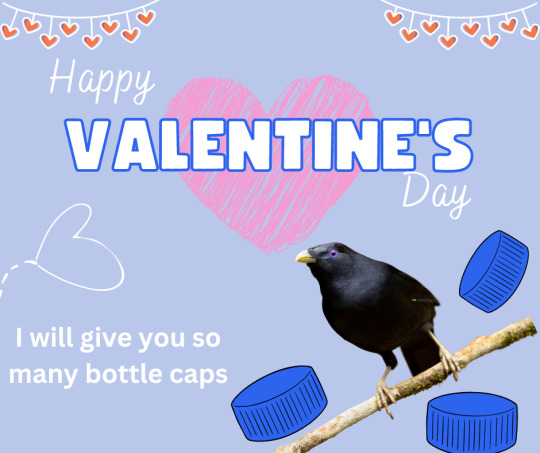

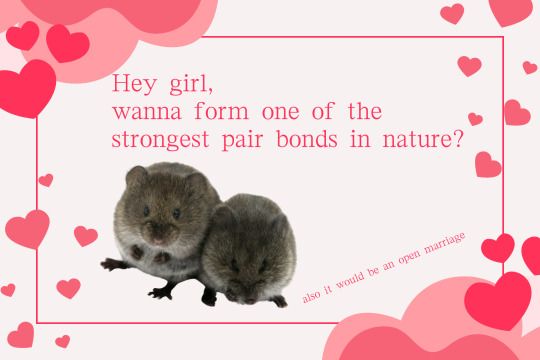
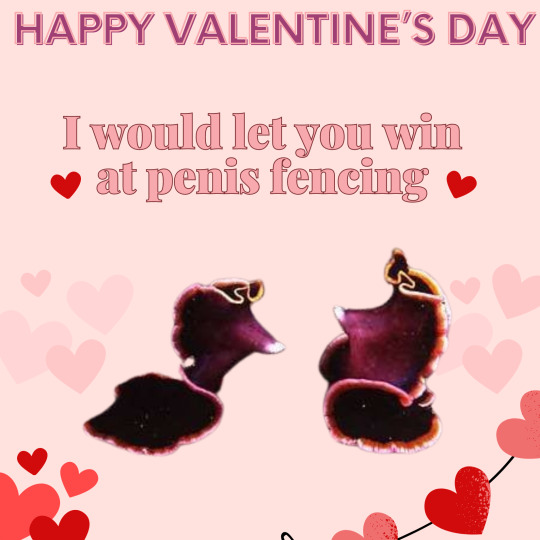

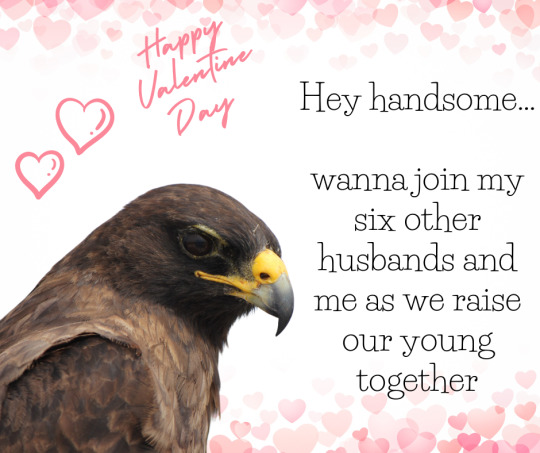
1. Satin bowerbird
2. American alligator
3. Prairie vole
4. Marine flatworm (genus Pseudobiceros)
5. Bedbug
6. Galapagos hawk
826 notes
·
View notes
Text


Frank and Gerard as prairie voles (Microtus ochrogaster)
60 notes
·
View notes
Text
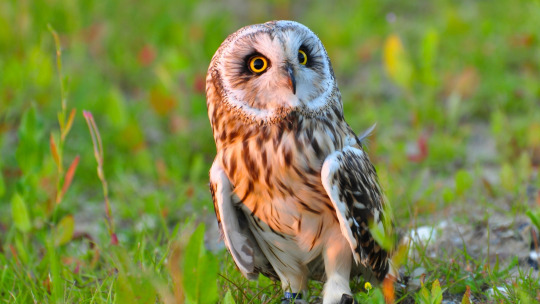

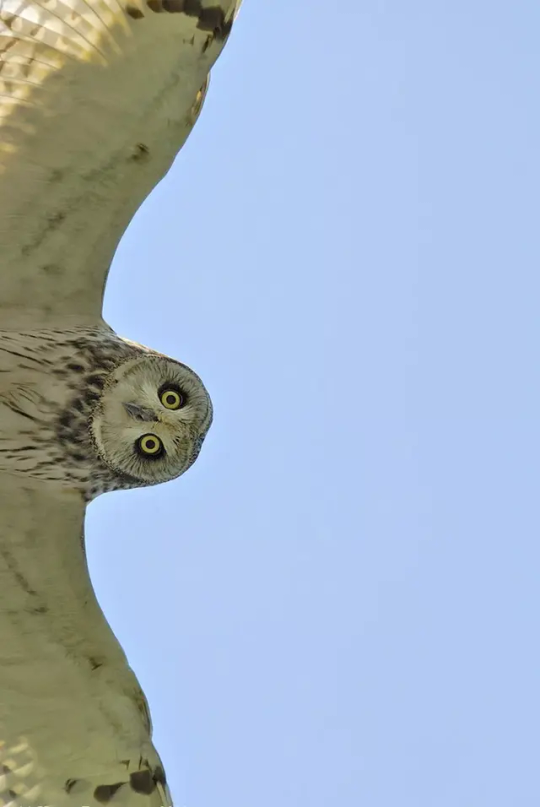
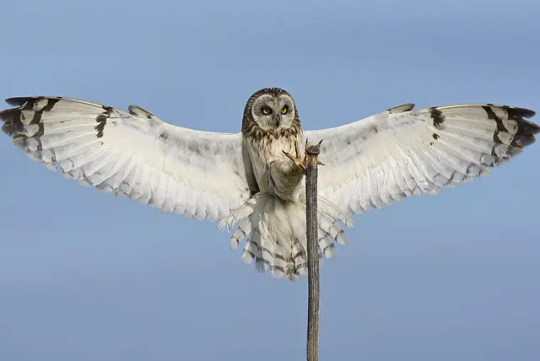

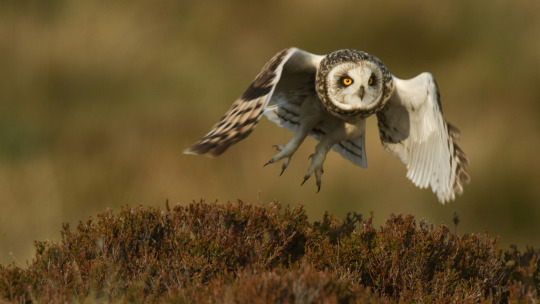
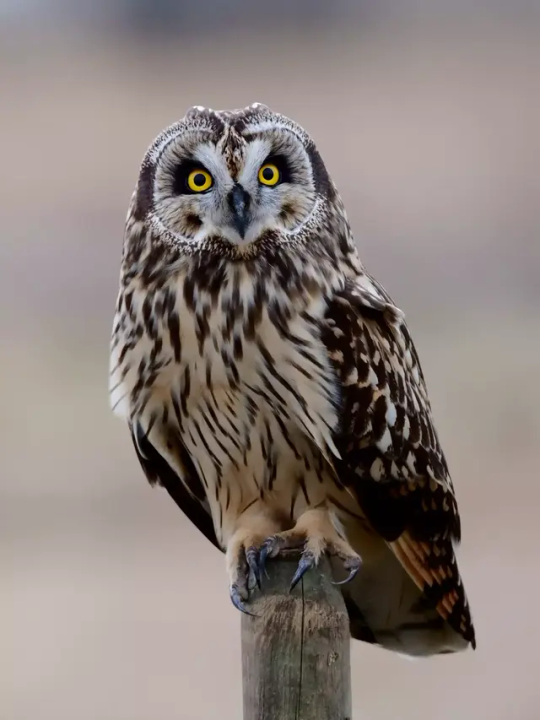


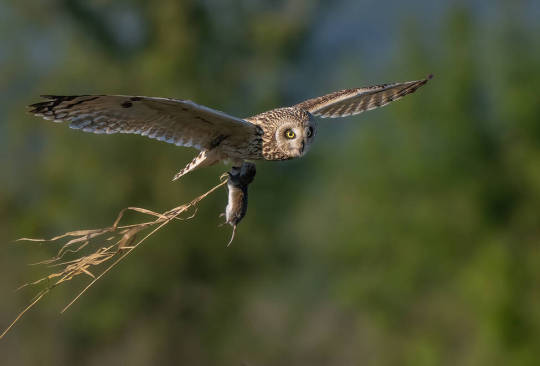
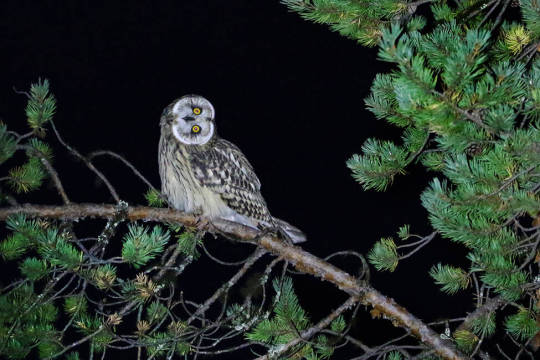

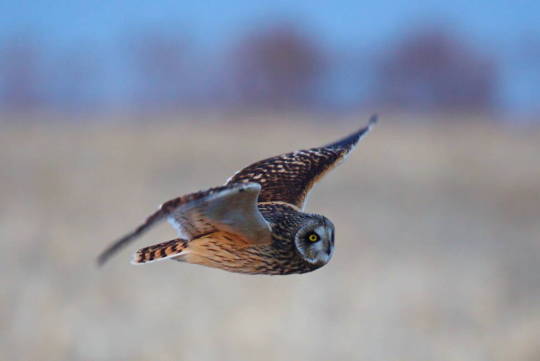

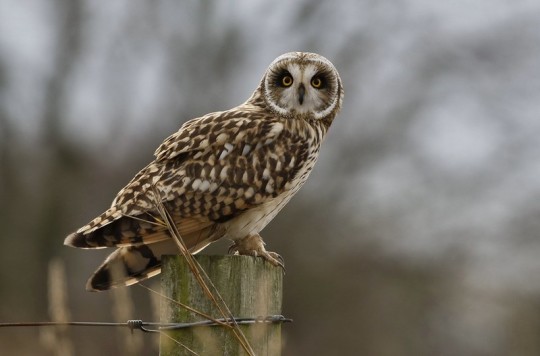
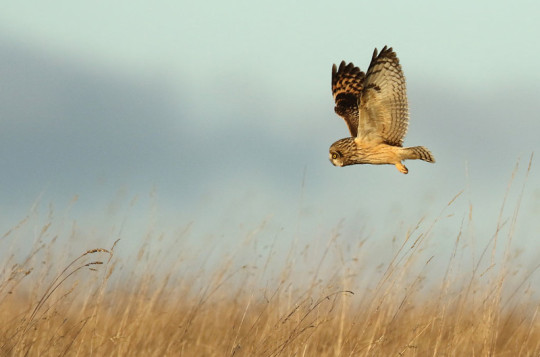


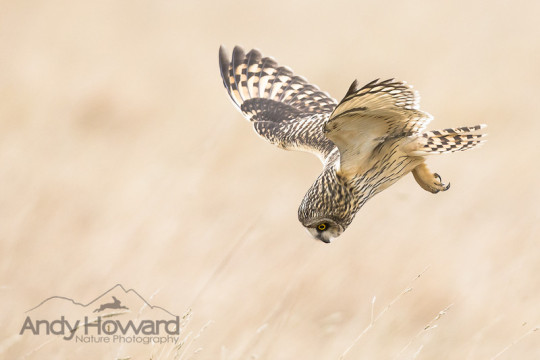
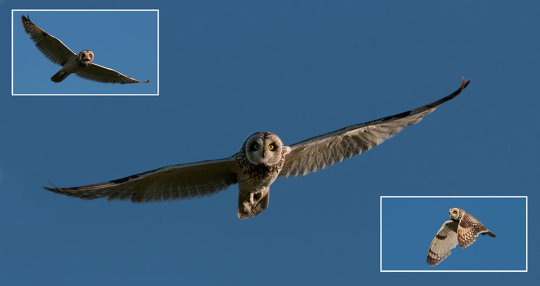

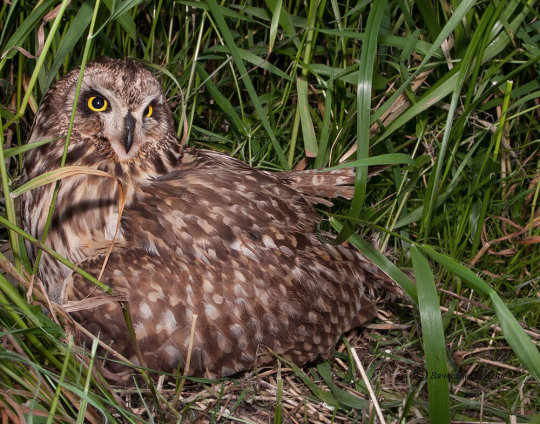



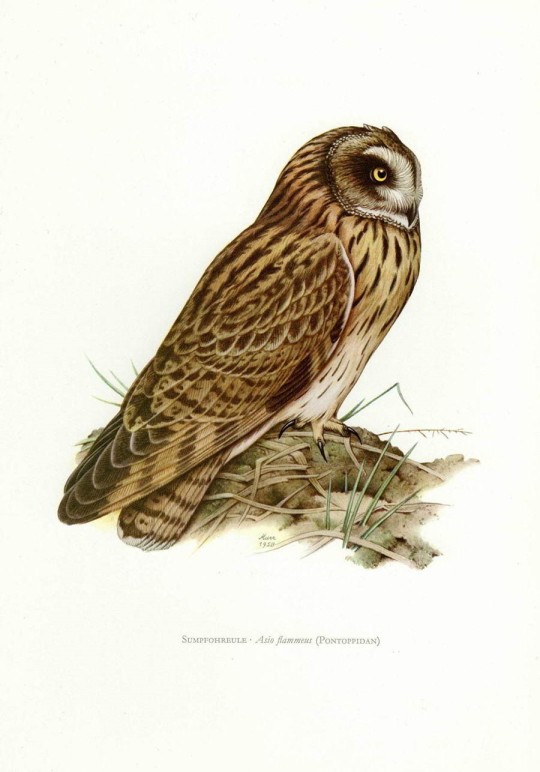
Болотная сова (Asio flammeus) – среднего размера сова: длина ее тела колеблется от 34 до 42 см, вес самцов - 0,23-0,39 кг, самок - 0,24-0,43 кг. Крылья у нее длинные, ноги украшены пучками из перьев, на голове расположены маленькие вертикально стоящие "ушки" из перьев.
Болотная сова распространена очень широко, она обитает на всех континентах, кроме Австралии и Антар��тики и населяет соленоводные болота, прибрежные равнины, хвойные леса, тундру, трясины, поля, прерии, высокотравные степи (часто с солончаками), луга (в поймах рек и озер), гористые местности и субальпийские луга, сельскохозяйственные угодья и парковые насаждения. Во всех местах обитания болотная сова придерживается открытых пространств.
Большую часть рациона этой птицы составляют мелкие грызуны (мыши, полёвки, лемминги, крысы, хомяки и ондатры), кролики, землеройки, летучие мыши, птицы (кулики, крачки, мелкие чайки, жаворонки и дрозды), насекомые (кузнечики, жуки, гусеницы) и иногда рыба.
Охотится болотная сова в любое время суток, низко паря над открытым пространством. На добычу она обычно нападает с полета или из засады и несёт ее в когтях. Болотные совы – моногамы и образуют постоянные пары. Самец привлекает самку на свой участок красивыми пируэтами в воздухе. Иногда в брачных полетах участвуют обе птицы: они гоняются друг за другом, сцепляются когтями или в шутку борются. Гнездом обычно служит расчищенная самкой ямка диаметром до 40 см на вершине плоской кочки среди густой травы или тростника. В кладке 4–7 яиц, которые насиживает самка.
Swamp Owl (Asio flammeus) – medium-sized owl: its body length ranges from 34 to 42 cm, the weight of males is 0.23-0.39 kg, females - 0.24-0.43 kg. Her wings are long, her legs are decorated with tufts of feathers, and small vertically standing "ears" of feathers are located on her head.
The is very widespread, it lives on all continents except Australia and Antarctica and inhabits saltwater swamps, coastal plains, coniferous forests, tundra, bogs, fields, prairies, tall grass steppes (often with salt marshes), meadows (in floodplains of rivers and lakes), mountainous areas and subalpine meadows, agricultural lands and parkland. In all habitats, the swamp owl adheres to open spaces.
Most of the diet of this bird consists of small rodents (mice, voles, lemmings, rats, hamsters and muskrats), rabbits, shrews, bats, birds (sandpipers, terns, small gulls, larks and thrushes), insects (grasshoppers, beetles, caterpillars) and sometimes fish.
The swamp owl hunts at any time of the day, hovering low over an open space. It usually attacks prey from flight or from ambush and carries it in its claws. Swamp owls are monogamous and form permanent pairs. The male attracts the female to his site with beautiful pirouettes in the air. Sometimes both birds participate in mating flights: they chase each other, lock claws or jokingly fight. The nest is usually a hole cleared by a female with a diameter of up to 40 cm on top of a flat hummock among dense grass or reeds. There are 4-7 eggs in the clutch, which are incubated by the female.
Источник://www.ebirds.ru/vid/225.htm,/bigenc.ru/c/bolotnaia-sova-bb9577,/zoogalaktika.ru/photos/aves/strigiformes/asio-flammeus, //www.mos.ru/news/item/86280073/,://ecology.polotsk.museum.by/node/42982,/russia.birding.day/v2taxon.php?s=423&l=ru.
#nature#nature aesthetic#bird photography#birds video#owl#swamp owl#asio flammeus#night photos#birds art#природа#фотографии птиц#видео птиц#сова#болотная сова#природнаякрасота#ночные фото#птицы арт
208 notes
·
View notes
Text
Owls are fascinating and are the best posers for photos. Some owl photos from Smithsonian

With their eyes nearly front and center, owls don’t benefit much from peripheral vision, but their heads can rotate 135 degrees in any direction, giving them a great field of view. Pedro Jarque Krebs, Spain, 2021

The feathers on these barn owls perfectly match the color of the lichen on the rock nearby. Mitch Walters, California, 2011

Great gray owls fly low when searching for mice, voles and other small prey in the dry grass and meadows. Jennifer Rogers, Wyoming, 2016

“‘Who’ are you looking at?” a parliament of burrowing owls on a prairie in Hanover seemingly inquire about a visitor. Jamie Johnston, Colorado, 2024

As if it were holding a cape, this snowy owl brings its feathers under its chin in dramatic fashion. Chris St. Michael, Canada, 2016

This unusual burrowing owl has dark eyes, instead of the more common yellow pigment. Megan Lorenz, Florida, 2015

Beware. When a great horned owl clenches its strong talons, it takes 28 pounds of force to open them again. Sandy Scott, Florida, 2018

A pair of barred owls rest in an old-growth forest. Chris St. Michael, Florida, 2016
95 notes
·
View notes
Text
Ok, sometimes Twitter is pretty funny.
Dude googled studies about female brain treachery and linked to somthing he liked...

But didn't notice the study was about voles.

Man's putting those slutty prairie voles on blast.


SEO, misinformation, social media compartmentalization, and outrage algorithms have truly ruined the internet but it does give me a little chuckle from time to time.
249 notes
·
View notes
Text
masterlist
welcome to the atlantic cheese factory! we make all our cheeses in-house and fresh, aged to absolute perfection. here at the atlantic cheese factory we specialize in medium aged cheeses but we can also do mild, sharp or if your up for it, extra sharp! feel free to request a custom cheese, or five.
please note there are no mice allowed!!!

cheese aging chart
mild (silly)
medium (fluff)
sharp (angst)
extra sharp (suggestive/mild spice)

CALL OF DUTY
ghost hc medium
gaz hcs medium
price hcs medium
soap hcs medium
all of these are pretty explanatory
ghost hcs sharp
angsty general!!
reader on period x ghost texts mild
educate him pls
graves hcs medium
general graves hcs
ghost texts medium
bear in the house!
graves texts medium
you guys have a cat, phillip puts a hat on the cat
tf141 hcs mild
also very general
soap drabble sharp
ouu.. after he died angst
graves at home hcs medium
whatever this is
soap hcs 2 medium
general hcs
flirty soap extra sharp
req!
ghost and cat chronicles 1 medium
ghost finds cat?
ghost and cat chronicles 2 medium
johnny and gaz meet cat!
graves thunderstorm comfort (platonic) medium
plantonic only!! reader intended to be a young child
graves drabble sharp
angst, left it half done so you imagine the rest
ghost sh comfort medium-sharp
cw for mentions of sh!
price hcs 2 medium
general!
bookworm reader x tf141 mild-medium
what they would do if they have a little wormy
cod characters as parents medium
personal favourite
animal documentary ghost fluff?? medium
two prairie voles
cod characters as animals mild
pretty self explanatory :)
you and keegan (and kids) at the carnival medium
sniper skills going to good use
gaz comfort medium-sharp
rainy day comfort
snowbound medium
snow day with ghost
sun, sand and shadow(s) medium
beach day with the shadow company!
hold the fort down mild-medium
build a blanket fort with the soapy boy?
a crescent memory medium
i dont even know but i like it, picasso
coffee and comfort medium
konig… 😰
bunny care medium
keegan fluff!!!! this is not mine but rather our favourite cheesy partner >:) cheese to cheese iykyk…
novocaine novocaine (alt) sharp
ghost angst!! pins and needles inspired, (nessa barrett)
slow down 2 3 extra sharp
i actually dont know, smutty so mdni, pls!! xx
cuddly comfort medium
cuddles with graves after a long day!
bunny love 1 2 (incomplete mini series) medium
ghost as a bunny dad!! this was a req. :)
passenger princess extra sharp
motorcycle rider ghostie, need i say more?
spa day medium
spa day with gaz!!
skibidi toilet medium
i didnt have a name for this but grumpy reader x sunshine soap!
love from a distance sharp
little ghost angst
(gala) apple of his eye extra sharp
sugar daddy graves x sugar baby reader
a ghost of your past sharp
more ghost angst. hahaha.
ghost in the sheets extra sharp
escort reader x ghost! smut, so mdni pleaseee
babydoll extra sharp
ghost and reader smut! mdni
captain price smut extra sharp
mdni!
deep devotion extra sharp
skull fucking with ghost, mdni
no where to run extra sharp
car sex with ghost, mdni (and hes dark romance ish!!)
marked for death 1 2 extra sharp
two part, enemies and taken place during the alone mission!!

thank you for touring the atlantic cheese factory, cheese come again! and watch the trap on your way out. (security reasons)
🪤
51 notes
·
View notes
Text
I love when they name animals and they're just like "the most remarkable thing about this creature is where it hangs out. why are you out there dude. it's weird."
(see: barn owls, tree creeper, barn swallow, burrowing owl, water bugs, allen's swamp monkeys, ground beetle, cactus wren, eurasian water shrew, field vole, groundhog, mountain zebra, prairie dogs, stone centipede, etc)
9 notes
·
View notes
Note
Ya'know, I can't help but think that for those that ships Kafka and Soshiro, that the kaiju verson of Soshiro is going to struggle a lot if he ever saw a fully powered up kaiju Kafka.
He wants to fight the lovable so bad, like nothing else. And at the same time want of fuck the himbo sensless and hopefully fill him up with whelps.
Problem is, which one should he do first. Thats the real struggle.
Gonna tag this as suggestive since it doesn't fully cross into NSFW territory for my tastes and it's open to biology inclusion. Still putting my response under the read more. Do know that I have at least three ideas which involves a Kaiju!Soshiro.
Considering his species are the kaiju equivalent to warriors, it's both. They prefer mates who are strong whether it be strength or in this case determination/stubbornness. Soshiro would go with what Kafka is the most comfortable with.
He has a good handle on his instincts, especially if his mate is human. Like Prairie Voles, Soshiro's species mate for life so any big decision has to be mutual between them both. Polyamory, offspring, etc.
Kids are guaranteed if not careful since like I mentioned in the concept post, Soshiro's species has both kinds of reproductive plumbing.

#sonicasura#sonicasura answers#asks#anonymous#spicy anon#kaiju no. 8#kaiju no 8#kn8#kaijuno.8#kaijuno8#monster no 8#kaiju number 8#monster no. 8#soshiro hoshina#hoshina soshiro#kaiju!soshiro#kafka#kafka hibino#hoshikaf#kafhoshi#kafka x soshiro#suggestive
13 notes
·
View notes
Text










Mustela nigripes better known as the black-footed ferret, American polecat, or prairie dog hunter is a species of mustelid native to central North America. Once found throughout the majority of the Great Plains from northern mexico to southern Canada, where they inhabited short and mixed grass prairies, scrublands, and steppe grasslands. The species declined throughout the 20th century, primarily as a result of decreases in prairie dog populations, heavy fur trapping, and sylvatic plague. To the point the species was declared extinct in 1979, but a residual wild population was discovered in Meeteetse, Wyoming in 1981. A captive-breeding program launched by the United States Fish and Wildlife Service resulted in its reintroduction into eight western US states, Canada, and Mexico from 1991 to 2009. As of 2015, over 200 mature individuals are in the wild across 18 populations, with four self-sustaining populations in South Dakota, Arizona, and Wyoming. Black footed ferrets are nocturnal and solitary animals which typically only group up to breed and raise there young. They are carnivores which almost exclusively prey upon prairie dogs as well as occasionally mice, voles, rabbits, hares, squirrels, pocket gophers, and small birds. Black footed ferrets are themselves preyed upon by eagles, hawks, falcons, owls, badgers, coyotes, bobcats, and large snakes. Although capable of digging there own burrows, black footed ferrets usually nest in abandoned prairie dog burrows. Reaching around 19 to 24 inches (48.3 to 61cms) in length and 1.4 to 2.5lbs (.64 to 1.13kgs) in weight, the black-footed ferret has a long, slender body with black outlines on its paws, ears, parts of its face and its tail. The forehead is arched and broad, and the muzzle is short. Breeding occurs in March and April. After a 41 day pregnancy a mother black footed ferret will give birth to 1 to 9 kits. Kits are born blind and helpless. The female cares for the young by herself. Kits remain underground in the burrow for two months at which point the mother moves kits to a new burrow and begins to teach hunting and survival skills. Under ideal conditions a black footed ferret will become independent at around 5 months of age, sexual mature at 1 year of age, and may live up to 5 years.
8 notes
·
View notes
Text
“Transgender Woman in 2025 Accidentally Declared Official State Symbol of Resilience After Surviving Yet Another Legislative Session”
Washington, D.C. — April 2025
In what experts are calling “equal parts inspiring and ridiculous,” 34-year-old transgender woman, Kayla Martinez of Des Moines, Iowa, has been accidentally declared her state’s Official Symbol of Resilience after surviving her 14th consecutive attempt to just live a normal life amidst a growing pile of anti-trans legislation, misgendering at coffee shops, and debates about her existence on breakfast TV.
The bill, originally intended to designate the prairie vole as a symbol of resilience for its ability to mate for life despite Iowa winters, was accidentally amended by a sleep-deprived intern who Googled “resilience” and saw Kayla’s viral TikTok where she calmly explained gender dysphoria while assembling IKEA furniture and fending off an internet troll named Chad_69.
Lawmakers, not realizing the change, passed the bill unanimously.
“Honestly, it tracks,” said Kayla, while sipping oat milk cold brew and dodging a protestor wearing a sandwich board that read, God Hates Pronouns. “I’ve outlived four bathroom bans, three social media witch hunts, and that one family reunion where my cousin said ‘they/them? But there’s only one of you?’ I deserve a plaque at least.”
The plaque is, in fact, coming. A bronze statue of Kayla holding a copy of the Constitution in one hand and a venti iced latte in the other is currently being commissioned. She’s asked for it to be placed in front of the state capitol, facing the men’s restroom—because irony.
Meanwhile, conservative lawmakers were reportedly unaware of the mix-up until someone brought it up at a press conference.
“We thought we were voting for a rodent,” one representative said. “Honestly, we didn’t even read it. Who knew being resilient could involve eyeliner and reproductive rights?”
Reactions have been mixed. Progressives are thrilled. Trans youth are inspired. And one conspiracy theorist has already Photoshopped Kayla into a scene from The Matrix, claiming she’s a government AI.
When asked how she felt about her new official status, Kayla smiled and said, “I’d like to thank God, my therapist, and every cis person who’s ever asked me what my ‘real name’ is. Your confusion has only made me stronger.”
As of press time, Florida had introduced emergency legislation to name all transgender people “illegal weather phenomena,” and Texas responded by declaring cowboy hats gender-neutral. The prairie vole could not be reached for comment.
In conclusion: 2025 may be a chaotic, confusing year, but one thing is clear — being trans in America now comes with statewide recognition, a bronze statue, and an unyielding sense of humor. Which, frankly, is more than Congress has.
5 notes
·
View notes